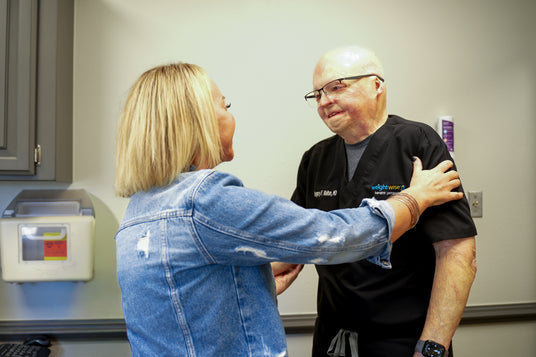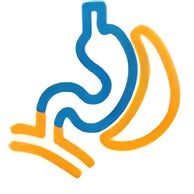
Duodenal Switch Surgery in Edmond, Oklahoma
The Duodenal Switch (SADI-S) is a newer weight-loss surgery that pairs a sleeve gastrectomy with the malabsorption that occurs with intestinal rerouting. This creates enhanced weight loss and improves obesity-related conditions.
Lose Weight
Feel Better
Be Healthy
Live Long

Here is how the Single Anastomosis Duodenal Switch works: A sleeve procedure is performed on the stomach, then the intestine is divided only one time, just past the stomach, and a “loop” from the end of the small bowel is connected to the duodenum. This creates 300cm of a common channel for digestion and absorption to occur.
- Greatest percentage of weight loss among operations
- Highest resolution of Type 2 diabetes among operations
- No foreign objects in body
- Can continue to take anti-inflammatory medications if needed
- Does not usually cause dumping syndrome
At WeightWise, we are invested in your success! You will be connected with a Patient Advocate who will guide you through your journey from start to finish. This includes visits with our behavorial health psychologist, registered dietitians, and exercise physiologist.
For more information on how to begin your transformation call us at 405-359-2475 or attend a free online bariatric surgery seminar.
Who is a good candidate for the Duodenal Switch?
Who is a good candidate for the Duodenal Switch?
The Duodenal Switch is best for patients who have a higher BMI, need to retain the ability to take NSAIDS, have advanced Type 2 Diabetes, hyperlipidemia, or developed gastric reflux/GERD.
The WeightWise Process
The WeightWise Process
At WeightWise, we are committed to the patient as a whole. This process consists of a medical evaluation, psychological screening, conversations with dietitians and exercise physiologists, and a sleep evaluation. All of this is done to make sure you don't have any underlying issues and understand everything that goes into a single anastomosis duodenal switch.
Medical Evaluation
This is when you meet with our providers to get an overview of your current health and investigate which procedure is right for you. Not every client is in the same situation and no procedure is one size fits all. During this evaluation, any medical issues you may have will be addressed.
We’ll also talk about your physical history as a whole. Have you tried dieting or exercising in the past? What worked and what didn’t? Were there major injuries or life events that got in the way of you living a healthy lifestyle? This will help WeightWise craft the perfect weight loss plan for you.
Psychological Screening
At WeightWise, we want to make sure you are mentally, as well as well as physically ready for the single anastomosis duodenal switch. There is more to these procedures than coming in, have the procedure, and then leaving. We want to make sure you understand what is about to happen to you and your body.
This is a big life moment for our patients. The body will undergo a massive change, which means your lifestyle will need a big change, too. We want to make sure you’re in the right place mentally for the surgery and help you work through any roadblocks you may have.
Dietitian Consult
While the single anastomosis duodenal switch will physically limit your food intake, it is possible to hurt or even injure yourself if you deviate from your new lifestyle. Our dietitians will discuss your past eating habits, nutritional knowledge, and trigger points you have that may negatively impact your food consumption. They will also outline a plan for the rest of your life.
This process doesn't have to be stressful! Once you understand why you’re doing this, it will be easier to see yourself eating less, becoming more healthy, and feeling better than you have in a long time. We’ll show you how you can still enjoy food, too!
Incorporating Physical Activity
While the single anastomosis duodenal switch procedure and improving your eating habits are certainly great ways to lose weight, instituting an exercise regimen will help you keep the weight off. Will you need to run three miles every day and hit the weights? Of course not!
Our exercise physiologist will outline a program specifically for you and discuss both short- and long-term goals. Although, if one of those goals happens to include running a marathon or becoming a powerlifter, we can help you reach those heights. But improving your cardiovascular system, flexibility, and overall strength are the main concerns.
Sleep Evaluation
Finally, we will talk to you about sleep apnea and how it can affect the success of the gastric sleeve surgery both during and after the procedure. We want this lifestyle change to work as much as you do, so we will investigate if you suffer from sleep apnea or not.
All of this is to ensure you have all the information you need to make this very important decision. WeightWise wants all of our patients to live long, productive lives well after the single anastomosis duodenal switch surgery. That’s why these consultations are so important – the more we know about our patients, the better it is before, during, and after the procedure.
Risks and Benefits
Risks and Benefits
The benefits of the single anastomosis duodenal switch are plenty! It as the best metabolic outcome of the weight loss surgeries, with most patients losing around 80% of their excess weight. The risks of this procedure include: developing reflux and vitamin deficiencies. As this procedure is the most aggressive, staying on top of vitamin intake is essential.
Recovery Timeline
Recovery Timeline
As with any laparoscopic procedure, recovery is quick with minimal pain. You will stay in the hospital for observation for two nights and most patients usually resume their normal activities within a week!
General Questions
General Questions
How is the Single Anastomosis Duodenal Switch different from the Gastric Bypass The Duodenal Switch offers greater weight loss and metabolic impact but requires stricter vitamin compliance and follow-up.
Will I have to take vitamins for life? Yes. Lifelong vitamin and mineral supplementation is required to prevent deficiencies.
Will my bowel habits change? Some patients experience more frequent or looser stools, especially early on. Diet and time usually improve this.
